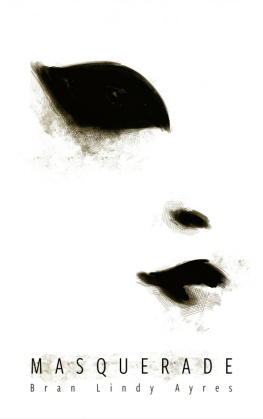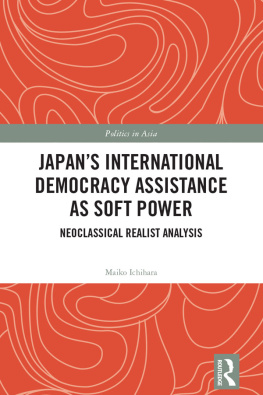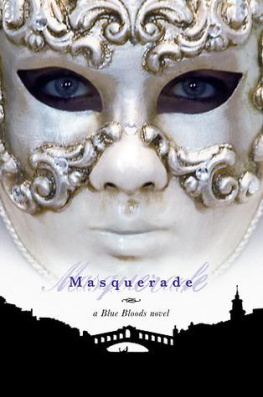University of California Press
Oakland, California
2021 by Jan Bardsley
Library of Congress Cataloging-in-Publication Data
Names: Bardsley, Jan, author.
Title: Maiko masquerade : crafting geisha girlhood in Japan / Jan Bardsley.
Description: Oakland, California : University of California Press, [2021] | Includes bibliographical references and index.
Identifiers: LCCN 2020037052 (print) | LCCN 2020037053 (ebook) | ISBN 9780520296435 (cloth) | ISBN 9780520296442 (paperback) | ISBN 9780520968943 (epub)
Subjects: LCSH : GeishasJapanKyotoHistory21st century. | Popular cultureJapanHistory21st century. | Kyoto (Japan)Social life and customs21st century.
Classification: LCC GT 3415. J 3 B 37 2021 (print) | LCC GT 3415. J 3 (ebook) | DDC 792.702/80952dc23
LC record available at https://lccn.loc.gov/2020037052
LC ebook record available at https://lccn.loc.gov/2020037053
Manufactured in the United States of America
30 29 28 27 26 25 24 23 22 21
10 9 8 7 6 5 4 3 2 1
For my students, with gratitude for your insights, enthusiasm, and dedication, and for all that you have taught me.
Preface
Why Study Maiko Stories?
What kinds of geisha stories exist these days in Japan? Are Japanese reading novels and seeing movies about geisha, too? My students raised these questions in spring 2002 at the end of our first-year seminar, Geisha in History, Fiction, and Fantasy. Our entry into Geisha studies had been diverse, taking us into discussions about constructions of gender and beauty, race and sexuality, Orientalism and fantasy. We explored shifting representations of geisha in Japanese woodblock prints (ukiyo-e), Kabuki, film, and short stories from the professions inception in the Edo period (16031867) through modern times. Turning to geisha girl fantasies abroad, we analyzed Victorian souvenir photographs, the 1896 British musical comedy, The Geisha: A Story of a Teahouse, and Hollywood geisha movies such as Shirley MacLaines 1962 comedy My Geisha. Understanding this historical context helped us analyze Arthur Goldens 1997 Memoirs of a Geisha, a global best seller still much in vogue at the time, and reception to it as indicated by hundreds of reader responses posted on Amazon. It was the phenomenal response to Goldens novel that had inspired meand other colleagues in the United Statesto create this college course on geisha to investigate the dynamics and effects of cultural representation. By the end of our seminar, we knew that the geishas profession and social position in Japan were not monolithic, but encompassed shifting labor conditions, geographical differences, various arts, and changes in social status. We saw how Japanese representations, though often different from Euro-American ones, spoke equally to their cultural moment. But what was the case in Japan now?
Searching for the answers to the question of current geisha representations became a quest. Over many trips to Kyoto, I realized that the geisha figured little in the contemporary cultural landscape. It was her teenage apprenticethe maikowho was the twenty-first-century star. Fictional maiko played the lead in films, novels, TV dramas, and manga. It was the maiko who inspired tourist experiences and souvenirs. Her celebrity aura was motivating teens from around Japan to venture to Kyoto to try to become maiko themselvesor at least to cosplay as one. To find out what kinds of geisha stories exist these days, we best begin by analyzing the meanings attached to this millennial maiko and the multiple representations of her. In turn, this emphasis points to competing views of the geishaand the geiko, as she is known in Kyotoand more broadly, to visions of girlhood in Japan.
This book is an interdisciplinary cultural studies project long in the making. Drawing from my years of teaching Geisha in History, Fiction, and Fantasy, I concentrate on textual and visual analysis of works produced mainly in Japan in the 2000s. Using the same critical lens with which my students and I viewed, for example, the Cold War geisha girl in American media, I explore the maikos cultural weight in Japan. To learn about the production of these texts and their subject, I sought out firsthand experiences and interviews in Kyoto from 2003 to 2019, having the most extended research time for five months in fall 2011. In Kyoto, I strolled the five districts that are home to geiko and maiko, attended dance performances and festivals, saw museum exhibits, and collected materials. I indulged my fan-girl curiosity, following Japanese guidebooks to sweets shops favored by maiko, visiting Kyoto sites featured in maiko fiction, and shopping for maiko goods in souvenir stores. In 2011 and later in 2017 and 2019, I was able to have conversations with those who in some way create maiko images, talking with authors, a painter, a photographer, Kyoto boosters, and business owners. This research has given me opportunities to talk with a small number of maiko, geiko, their clients, and other members of their community. Nevertheless, it is the textual maiko that draws my attention here. I intend Maiko Masquerade to contribute to conversations on representation, specifically the construction and influence of cultural icons. This is not an ethnography or a view behind the scenes, but a study of how diverse cultural texts in Japaneseguides, histories, fiction, film, narrative manga, and comicsvariously represent maiko, geiko, and their world, mainly in the first two decades of the twenty-first century. By focusing on representation, we see how maiko stories of all kinds construct notions of girlhood in Japan, connect gender roles to Japaneseness, and frame Kyoto as a site of touristic and historic Japan. Analyzing maiko stories takes us past the individual experience of a relatively few young women to the creation of local and national narratives, which, in turn, shape those individual experiences.
I hope my students in Geisha in History, Fiction, and Fantasy will enjoy getting an answer to their questionseven though this arrives almost twenty years later. Yet, as I complete this book in spring 2020, so much has changed. Covid-19 has wreaked havoc on Kyotos teahouse culture. All the spring dance productions, the years major activity for geiko and maiko, were cancelled. The Kyoto International Manga Museum, which houses the 100 Maiko Illustrations discussed in this book, is temporarily shuttered. Eirakuya, the textile firm that produces funny maiko prints also discussed below, is making cloth face masks. Geiko and maiko will face challenges in restoring their careers and their associated enterprises in the wake of the pandemic. But, as history shows, this is a resilient, creative community, which has overcome enormous setbacks in the past, to thrive again. Already, there are experiments with Zoom parties and other virtual performances. I look forward to seeing the spring dances again, walking in all five districts, and contemplating the new twenty-first-century stories produced about maiko and geiko.













